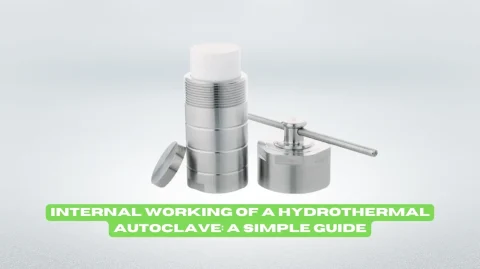High-pressure autoclave reactors are essential in pharmaceuticals, chemicals, and materials science industries. They help perform reactions under controlled high-pressure and high-temperature conditions. However, scaling up these reactors from small laboratories to larger industrial sizes presents several design challenges. Let’s explore these challenges in simple terms.
Uniform Heat and Pressure Distribution
In small reactors, it’s easier to maintain consistent temperature and pressure throughout the system. When scaling up, achieving uniformity becomes harder. Uneven heating or pressure differences can lead to incomplete reactions or unsafe conditions. Engineers must design efficient heating systems and optimize reactor shapes to avoid such issues.
Manufacturer of High Pressure Autoclave Reactors
Material Selection for Durability
The materials used in high-pressure reactors must withstand extreme conditions, such as high temperatures and pressures while being corrosion-resistant. Scaling up requires thicker and stronger materials to handle increased stress. Finding materials that balance durability, weight, and cost becomes a significant challenge.
Reactor Size and Geometry
As reactors grow, their geometry needs careful adjustment to ensure efficient mixing and reaction rates. Poor mixing in a large reactor can lead to uneven chemical reactions. To solve this issue, designers often include advanced mixing systems like stirrers or baffles.
Safety Concerns
Safety is a critical concern during scale-up. The larger the reactor, the greater the potential risk in case of failure. Designing robust safety features like pressure relief valves, monitoring systems, and emergency shutdown mechanisms is crucial. Engineers also conduct thorough testing to ensure safe operation under all conditions.
Control Systems and Automation
Controlling temperature, pressure, and reaction time becomes more complicated as the reactor grows. Advanced control systems and sensors are required to monitor and adjust real-time conditions. Automation plays a significant role in maintaining efficiency and safety in scaled-up reactors.
Cost Management
Scaling up a reactor is expensive. Larger reactors require more raw materials, advanced designs, and sophisticated control systems, all increasing costs. Engineers must find cost-effective solutions without compromising on quality or safety.
Transportation and Installation
Large reactors are challenging to transport and install. Their size and weight require special handling, and the installation site must be prepared to include them. These logistical challenges add complexity to the scaling-up process.
Environmental Impact
As reactors become larger, they consume more energy and resources. Engineers must design energy-efficient systems and explore sustainable practices to reduce the environmental footprint of scaled-up reactors.
Conclusion
Scaling up high-pressure autoclave reactors is challenging. It involves balancing performance, safety, cost, and environmental concerns. By addressing these challenges through innovative designs and advanced technologies, industries can ensure efficient and safe operation on a larger scale.
Would you like to explore any specific challenge mentioned above more?








